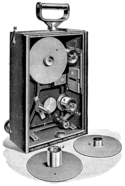An electronic oscillator is an electronic circuit that produces a periodic, oscillating or alternating current (AC) signal, usually a sine wave, square wave or a triangle wave, powered by a direct current (DC) source. Oscillators are found in many electronic devices, such as radio receivers, television sets, radio and television broadcast transmitters, computers, computer peripherals, cellphones, radar, and many other devices.

Sir John Ambrose Fleming FRS was an English electrical engineer and physicist who invented the first thermionic valve or vacuum tube, designed the radio transmitter with which the first transatlantic radio transmission was made, and also established the right-hand rule used in physics.
The early history of radio is the history of technology that produces and uses radio instruments that use radio waves. Within the timeline of radio, many people contributed theory and inventions in what became radio. Radio development began as "wireless telegraphy". Later radio history increasingly involves matters of broadcasting.

Wireless telegraphy or radiotelegraphy is transmission of text messages by radio waves, analogous to electrical telegraphy using cables. Before about 1910, the term wireless telegraphy was also used for other experimental technologies for transmitting telegraph signals without wires. In radiotelegraphy, information is transmitted by pulses of radio waves of two different lengths called "dots" and "dashes", which spell out text messages, usually in Morse code. In a manual system, the sending operator taps on a switch called a telegraph key which turns the transmitter on and off, producing the pulses of radio waves. At the receiver the pulses are audible in the receiver's speaker as beeps, which are translated back to text by an operator who knows Morse code.
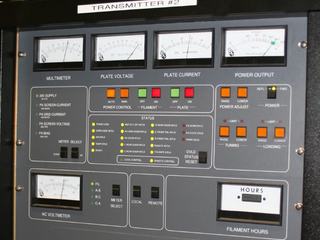
In electronics and telecommunications, a radio transmitter or just transmitter is an electronic device which produces radio waves with an antenna. The transmitter itself generates a radio frequency alternating current, which is applied to the antenna. When excited by this alternating current, the antenna radiates radio waves.

Reginald Aubrey Fessenden was a Canadian-born inventor, who did a majority of his work in the United States and also claimed U.S. citizenship through his American-born father. During his life he received hundreds of patents in various fields, most notably ones related to radio and sonar.

AM broadcasting is radio broadcasting using amplitude modulation (AM) transmissions. It was the first method developed for making audio radio transmissions, and is still used worldwide, primarily for medium wave transmissions, but also on the longwave and shortwave radio bands.

A commutator is a rotary electrical switch in certain types of electric motors and electrical generators that periodically reverses the current direction between the rotor and the external circuit. It consists of a cylinder composed of multiple metal contact segments on the rotating armature of the machine. Two or more electrical contacts called "brushes" made of a soft conductive material like carbon press against the commutator, making sliding contact with successive segments of the commutator as it rotates. The windings on the armature are connected to the commutator segments.

Valdemar Poulsen was a Danish engineer who developed a magnetic wire recorder called the telegraphone in 1898. He also made significant contributions to early radio technology, including the first continuous wave radio transmitter, the Poulsen arc, which was used for a majority of the earliest audio radio transmissions, before being supplanted by the development of vacuum-tube transmitters.

A spark-gap transmitter is an obsolete type of radio transmitter which generates radio waves by means of an electric spark. Spark-gap transmitters were the first type of radio transmitter, and were the main type used during the wireless telegraphy or "spark" era, the first three decades of radio, from 1887 to the end of World War I. German physicist Heinrich Hertz built the first experimental spark-gap transmitters in 1887, with which he proved the existence of radio waves and studied their properties.

A rotary converter is a type of electrical machine which acts as a mechanical rectifier, inverter or frequency converter.
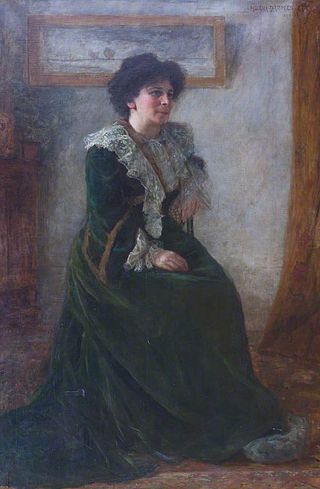
Phoebe Sarah Hertha Ayrton was a British engineer, mathematician, physicist and inventor, and suffragette. Known in adult life as Hertha Ayrton, born Phoebe Sarah Marks, she was awarded the Hughes Medal by the Royal Society for her work on electric arcs and ripple marks in sand and water.

The arc converter, sometimes called the arc transmitter, or Poulsen arc after Danish engineer Valdemar Poulsen who invented it in 1903, was a variety of spark transmitter used in early wireless telegraphy. The arc converter used an electric arc to convert direct current electricity into radio frequency alternating current. It was used as a radio transmitter from 1903 until the 1920s when it was replaced by vacuum tube transmitters. One of the first transmitters that could generate continuous sinusoidal waves, it was one of the first technologies used to transmit sound by radio. It is on the list of IEEE Milestones as a historic achievement in electrical engineering.
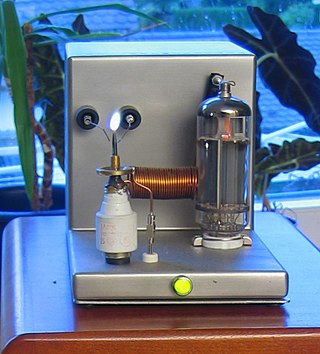
Plasma speakers or ionophones are a form of loudspeaker which varies air pressure via an electrical plasma instead of a solid diaphragm. The plasma arc heats the surrounding air causing it to expand. Varying the electrical signal that drives the plasma and connected to the output of an audio amplifier, the plasma size varies which in turn varies the expansion of the surrounding air creating sound waves.
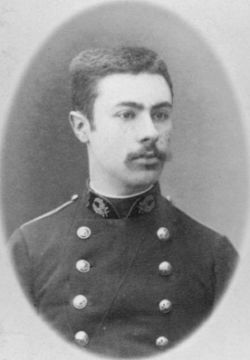
André-Eugène Blondel was a French engineer and physicist. He is the inventor of the electromechanical oscillograph and a system of photometric units of measurement.
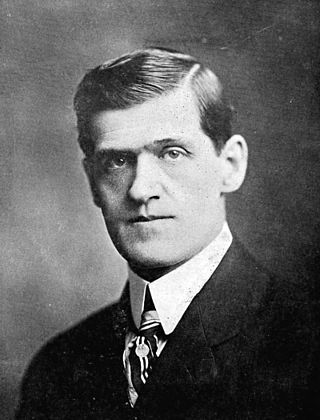
Archie Frederick Collins, who generally went by A. Frederick Collins, was a prominent early American experimenter in wireless telephony and prolific author of books and articles covering a wide range of scientific and technical subjects. His reputation was tarnished in 1913 when he was convicted of mail fraud related to stock promotion. However, after serving a year in prison, he returned to writing, including, beginning in 1922, The Radio Amateur's Handbook, which continued to be updated and published until the mid-1980s.

Nehemiah Hawkins was an American inventor, publisher and author was born in Providence, Rhode Island. He started working with the G&C Merriam Company of Springfield, MA. In Chicago he established a magazine called Steam — soon sold and incorporated into Power — then moved to New York. He was survived by a son and two daughters.
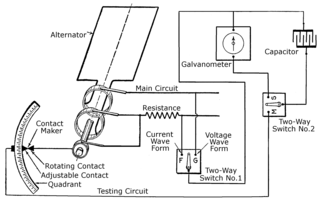
The history of the oscilloscope was fundamental to science because an oscilloscope is a device for viewing waveform oscillations, as of electrical voltage or current, in order to measure frequency and other wave characteristics. This was important in developing electromagnetic theory. The first recordings of waveforms were with a galvanometer coupled to a mechanical drawing system dating from the second decade of the 19th century. The modern day digital oscilloscope is a consequence of multiple generations of development of the oscillograph, cathode-ray tubes, analog oscilloscopes, and digital electronics.

The thermo-galvanometer is an instrument for measuring small electric currents. It was invented by William Duddell about 1900. The following is a description of the instrument taken from a trade catalog of Cambridge Scientific Instrument Company dated 1905:
For a long time the need of an instrument capable of accurately measuring small alternating currents has been keenly felt. The high resistance and self-induction of the coils of instruments of the electro-magnetic type frequently prevent their use. Electro-static instruments as at present constructed are not altogether suitable for measuring very small currents, unless a sufficient potential difference is available.
The thermo-galvanometer designed by Mr W. Duddell can be used for the measurement of extremely small currents to a high degree of accuracy. It has practically no self-induction or capacity and can therefore be used on a circuit of any frequency and currents as small as twenty micro-amperes can be readily measured by it. It is equally correct on continuous and alternating currents. It can therefore be accurately standardized by continuous current and used without error on circuits of any frequency or wave-form.
The principle of the thermo-galvanometer is simple. The instrument consists of a resistance which is heated by the current to be measured, the heat from the resistance falling on the thermo-junction of a Boys radio-micrometer. The rise in temperature of the lower junction of the thermo-couple produces a current in the loop which is deflected by the magnetic field against the torsion of the quartz fibre.

Nikola Tesla patented the Tesla coil circuit on April 25, 1891. and first publicly demonstrated it May 20, 1891 in his lecture "Experiments with Alternate Currents of Very High Frequency and Their Application to Methods of Artificial Illumination" before the American Institute of Electrical Engineers at Columbia College, New York. Although Tesla patented many similar circuits during this period, this was the first that contained all the elements of the Tesla coil: high voltage primary transformer, capacitor, spark gap, and air core "oscillation transformer".


